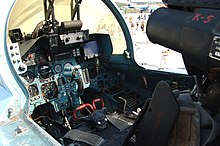
The Russian Navy’s dream of fielding a powerful, carrier-based fighter jet seems to have sunk much like their troubled warplane, the Su-33.

The Su-33 was primarily designed as a carrier-based version intended for operation on the Admiral Kuznetsov, and it represents more than just a modified Su-27.

During regular flight operations, the Su-33 boasts approximately 8 percent larger wing area compared to the Su-27.

In order to adapt to the relatively limited runway lengths typical of aircraft carriers, the Su-33 is equipped with a set of canards located towards the rear of the cockpit section on the fuselage.

The Su-33 has faced a series of disastrous incidents since its introduction in 1999.

The Su-33’s troubled history is highlighted by its repeated failures to land on the Admiral Kuznetsov, resulting in spectacular crashes and loss of aircraft.

The aircraft saw its inaugural combat deployment in November 2016, where it was utilized to target ISIS and Al-Nusra terrorist installations in Syria’s Idlib and Homs provinces using 500 kg precision bombs.

Nevertheless, only a few weeks later, a Su-33 from Russia’s carrier met with an accident in the Mediterranean Sea.

The incident occurred when the arrestor cable snapped during the aircraft’s second landing attempt. Fortunately, the pilot successfully ejected and was later rescued.

On paper, the Su-33 boasts impressive specifications: a top speed of 1,430 miles per hour, a range of 1,860 miles, and the ability to reach an altitude of 55,800 feet.

With advanced armaments including 30mm Gsh-30-1 cannons and a variety of missiles and unguided bombs, the jet was poised to be a formidable force.

However, it turned out that these birds could not carry the armaments they were designed to carry, and the Su-33’s real-life performance has been hampered by its inability to successfully fulfill its multi-role designation.

The result has been a fighter with a lackluster service record. The Su-33 has seen limited use in combat scenarios.

Moreover, despite attempts to modernize and potentially export the Su-33, no international buyers have expressed interest in this “hunky junk.”

The future of the remaining Su-33s is uncertain. The Russian Navy has already shifted focus to the MiG-29K, an aircraft with electronic countermeasures, advanced radar systems, and better suitability for carrier operations.
Relevant articles:
– Russia’s Su-33 Aircraft Carrier Fighter Nightmare Is Embarrassing, The National Interest
– The Junk Fighter? Russia’s Su-33 Is An Aircraft Carrier’s Worst Nightmare, Tufts University
– Russia’s Sukhoi Su-33 is a Poor Excuse for a Carrier-based Fighter, The National Interest
– Russian SU-33 fighter jet sinks after falling off aircraft carrier, Daily Express
